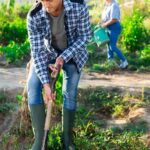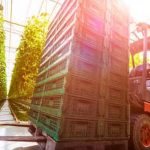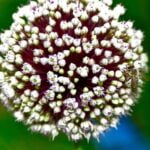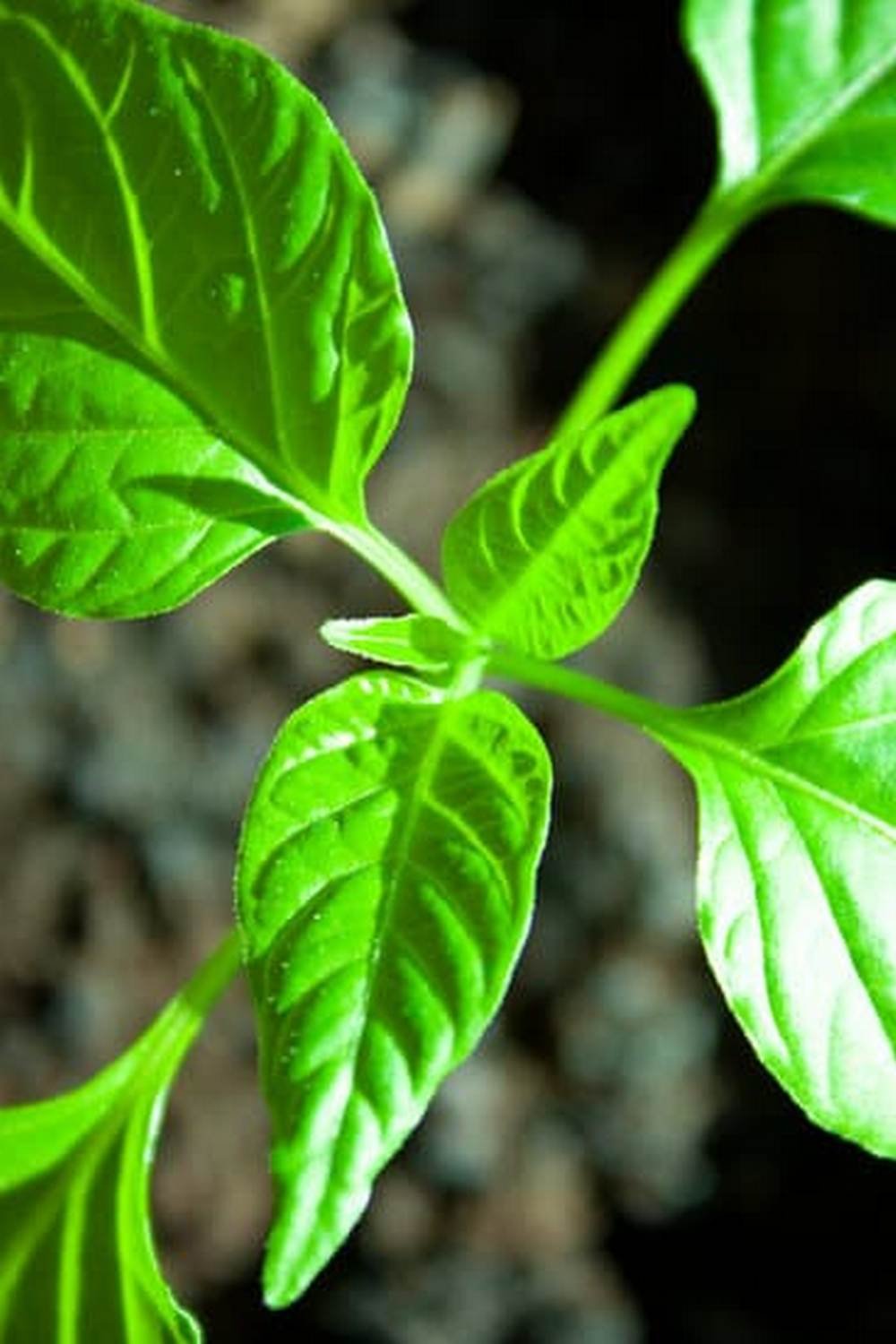Are you ready to take on the rewarding challenge of vegetable gardening in Southern Alberta? Despite its unique climate and weather conditions, successful vegetable gardening is not only possible but also incredibly fulfilling in this region.
With the right knowledge and techniques, you can grow a thriving garden that provides an abundance of fresh produce for your table. In this article, we will explore the unique challenges and opportunities of vegetable gardening in Southern Alberta, providing valuable tips and information to help you achieve success in your garden.
Southern Alberta presents a set of distinctive factors that require special consideration when it comes to vegetable gardening. The region’s short growing season and harsh weather conditions can pose challenges for gardeners, but with careful planning and strategic techniques, these challenges can be overcome. Understanding the climate considerations and learning how to work with the soil of this area will provide a strong foundation for your vegetable gardening endeavors.
By delving into topics such as soil preparation, plant selection, planting and maintenance practices, pest and disease management, extending the growing season, as well as harvesting and preserving techniques specific to Southern Alberta’s climate, this article aims to equip you with the essential knowledge needed to succeed in your vegetable garden.
Additionally, we will discuss the availability of community resources such as local gardening groups, farmers markets, and extension services that can offer valuable support and information for vegetable gardening enthusiasts in Southern Alberta.
No matter if you are a novice or experienced gardener, this article is designed to offer guidance on navigating the unique world of vegetable gardening in Southern Alberta.
Climate Considerations
Southern Alberta’s unique climate presents both challenges and opportunities for vegetable gardening. With a short growing season and harsh weather conditions, gardeners in this region must be strategic and resourceful in order to successfully grow a variety of vegetables. Understanding the climate considerations in Southern Alberta is crucial for planning and maintaining a thriving vegetable garden.
Short Growing Season
The short growing season in Southern Alberta means that gardeners have a limited window of time to plant and harvest their crops. Typically, the last frost occurs late in the spring, and the first frost arrives early in the fall, leaving only a few months for plants to mature. This condensed growing season requires careful planning and selection of early-maturing varieties that can reach maturity before the first frost.
Harsh Weather Conditions
Southern Alberta experiences extreme weather conditions, including strong winds, hailstorms, and occasional drought. These environmental factors can have a significant impact on the success of a vegetable garden. Gardeners must take proactive measures to protect their crops from wind damage, hail, and water scarcity by using row covers, mulching, and efficient watering techniques.
Optimizing for Success
Despite these challenges, Southern Alberta’s climate also provides opportunities for vegetable gardening. The region boasts abundant sunshine during the summer months, which is essential for plant growth. Additionally, cooler nighttime temperatures can benefit certain crops by reducing heat stress. By understanding and adapting to the unique climate considerations of Southern Alberta, gardeners can optimize their growing practices to achieve successful vegetable gardens.
By considering these factors when planning a vegetable garden in Southern Alberta’s climate, individuals can increase their chances of having a successful harvest despite the challenges posed by weather patterns specific to this area.
Soil Preparation
Understanding the Soil Composition
One of the key factors in successful vegetable gardening in southern Alberta is understanding the composition of the soil. With its unique climate and environmental conditions, southern Alberta soil can vary greatly from location to location. It’s important to perform a soil test to determine the pH level and nutrient content of your soil. Understanding these factors will help you determine what amendments and fertilizers are necessary for optimal vegetable growth.
Amending the Soil
Once you have a better understanding of your soil composition, it’s time to amend the soil to ensure it provides the best growing environment for your vegetables. Adding organic matter such as compost or well-rotted manure can help improve soil structure and fertility. Additionally, incorporating materials like peat moss or vermiculite can aid in water retention and drainage, both essential factors in successful vegetable gardening in this region.
Fertilizing for Success
In addition to amending the soil, proper fertilization is crucial for successful vegetable gardening in southern Alberta. The short growing season means that plants need access to essential nutrients from the start. Using a balanced fertilizer with equal parts nitrogen, phosphorus, and potassium can help promote healthy root development and robust growth. It’s important to follow recommended application rates and timing according to specific vegetables’ needs, as over-fertilization can lead to excessive vegetative growth with little fruit production.
By taking these steps for soil preparation, amending, and fertilizing, gardeners in southern Alberta can create an optimal growing environment for their vegetables despite the challenging climate and weather conditions. With proper care and attention to the unique needs of this region, a bountiful harvest is certainly within reach.
Choosing the Right Vegetables
When it comes to vegetable gardening in Southern Alberta, choosing the right vegetables is crucial for a successful harvest. The region’s unique climate presents challenges, but also opportunities for growing certain varieties that thrive in this environment. Here are some tips for selecting the best vegetables for your garden in Southern Alberta:
- Consider cold-hardy vegetables: With the short growing season and possibility of late spring frosts and early fall freezes, it’s important to choose vegetables that can withstand cooler temperatures. Some cold-hardy options include kale, spinach, carrots, beets, and radishes.
- Opt for quick-maturing varieties: Due to the shorter growing season, it’s beneficial to select vegetables that have a shorter time to maturity. Look for varieties of lettuce, green beans, and peas that can be harvested within a relatively short timeframe.
- Choose heat-tolerant vegetables: While Southern Alberta experiences cool temperatures throughout much of the growing season, there are times when the summers can bring higher temperatures. Selecting heat-tolerant vegetables such as tomatoes, peppers, cucumbers, and zucchini can ensure a successful harvest despite the occasional heat wave.
By strategically choosing vegetables that are well-suited to the unique climate of Southern Alberta, you can increase the likelihood of a bountiful and thriving garden.
In addition to considering the specific climate conditions of Southern Alberta, it’s also important to take into account the limitations of water availability. Opting for drought-resistant or low-water-use vegetables such as garlic, onions, and potatoes can help conserve water while still producing a productive garden.
Lastly, consider seeking advice from local nurseries or gardening experts who are familiar with vegetable gardening in Southern Alberta. They can provide valuable insights and recommendations on which varieties tend to perform well in this region. With careful selection and planning, you can cultivate a diverse and successful vegetable garden in Southern Alberta.
Planting and Maintenance
When it comes to vegetable gardening in Southern Alberta, proper planting and maintenance are crucial for a successful harvest. Here are some best practices to keep in mind:
1. Select the right location: Choose a sunny spot with well-drained soil for your vegetable garden. Consider using raised beds or containers to improve drainage and soil quality.
2. Plan your planting schedule: Due to the short growing season in Southern Alberta, it’s important to start seeds indoors or purchase seedlings from local nurseries to get a head start on the growing season. Keep in mind the last frost date in your area when planning your planting schedule.
3. Provide adequate water: With the dry climate in Southern Alberta, it’s essential to provide consistent and adequate water for your vegetable garden. Consider using soaker hoses or drip irrigation to ensure that plants receive enough moisture without promoting disease.
4. Mulch and weed regularly: Mulching can help conserve soil moisture and suppress weeds, which is especially important in a region with limited rainfall. Regular weeding is also necessary to prevent competition for nutrients and sunlight.
5. Monitor for pests and diseases: Keep an eye out for common garden pests such as aphids, cutworms, and cabbage loopers, as well as diseases like powdery mildew and blight. Consider incorporating companion planting techniques or using natural pest control methods to minimize damage.
By following these best practices for planting and maintaining a healthy vegetable garden in Southern Alberta, you can increase your chances of a successful harvest despite the region’s unique climate challenges. Remember to stay informed about local weather conditions and seek support from the community resources available for vegetable gardening in Southern Alberta.
Pest and Disease Management
When it comes to vegetable gardening in southern Alberta, one of the biggest challenges that gardeners face is dealing with common garden pests and diseases. The short growing season and harsh weather conditions in this region can make plants more vulnerable to infestations and illnesses. However, with the right strategies and knowledge, gardeners can effectively manage these issues and protect their crops.
One of the key strategies for pest and disease management in southern Alberta is to choose plant varieties that are well-suited to the local climate. Selecting disease-resistant varieties can help reduce the risk of plant illnesses, while also ensuring a better chance of a successful harvest. Additionally, practicing crop rotation and maintaining good garden hygiene can help prevent the buildup of pests and diseases in the soil.
Another important aspect of pest and disease management in vegetable gardening is proactive monitoring. Regularly inspecting plants for signs of pest damage or disease symptoms allows for early intervention, which can be crucial in preventing widespread infestations or outbreaks.
Lastly, learning about natural pest control methods such as companion planting, attracting beneficial insects, and using organic pesticides can also play a significant role in managing garden pests while minimizing environmental impact.
| Common Garden Pests | Plant Diseases |
|---|---|
| Aphids | Powdery Mildew |
| Cabbage Worms | Early Blight |
| Cutworms | Fusarium Wilt |
Extending the Growing Season
In Southern Alberta, the short growing season can present a challenge for vegetable gardening enthusiasts. However, there are several techniques that can be employed to extend the growing season and maximize the harvest. One popular method is the use of season extenders such as hoop houses, cold frames, and row covers. These structures help protect plants from frost and cold temperatures, allowing them to thrive beyond their usual growing period.
Another technique for extending the growing season in Southern Alberta is succession planting. By planting crops at different times throughout the season, gardeners can stagger their harvests and ensure a continuous supply of fresh produce. This can be especially beneficial for fast-maturing vegetables such as lettuce and radishes.
Additionally, utilizing heat-absorbing materials such as black plastic mulch can help warm the soil and create a more favorable environment for plant growth. This is particularly important in regions with cooler temperatures and a shorter growing season like Southern Alberta. Furthermore, prioritizing cold-tolerant vegetables such as Brussels sprouts, cabbage, and kale can also prolong the harvest in this challenging climate.
By implementing these techniques for extending the growing season, vegetable gardening enthusiasts in Southern Alberta can overcome the limitations posed by the area’s climate and ensure a successful and bountiful harvest of fresh produce. Engaging with local gardening communities and extension services can also provide valuable support and information on maximizing the growing season in this unique environment dedicated to vegetable gardening in Southern Alberta.
Harvesting and Preserving
After all the hard work of tending to your vegetable garden in Southern Alberta, it’s time to reap the rewards of your labor. Harvesting at the right time is crucial to maximize the yield and flavor of your crops. As a general rule, vegetables should be harvested when they are at their peak ripeness.
This means picking them at their best color, texture, and size. For example, tomatoes should be harvested when they are fully colored and slightly soft to the touch.
Once you have harvested your vegetables, proper preservation techniques will ensure that you can enjoy them for months to come. Canning, freezing, and drying are popular methods for preserving vegetables. Canning requires specific equipment and careful attention to hygiene and processing times to prevent bacterial contamination. Freezing is a simple method that retains most of the nutrients in vegetables, although it can affect texture in some cases. Drying is another option for preserving vegetables such as herbs, peppers, and tomatoes.
In addition to traditional preservation methods, there are other ways to prolong the enjoyment of your harvest. Many gardeners in Southern Alberta choose to make pickles, relishes, or chutneys from surplus vegetables. These preserves not only extend the shelf life of the produce but also add variety to meals throughout the year.
| Harvesting Tips | Preservation Methods |
|---|---|
| Pick vegetables at peak ripeness | Canning |
| Proper storage after harvesting | Freezing |
| Use appropriate containers for storing | Drying/Pickling |
Community Resources
In conclusion, vegetable gardening in Southern Alberta presents both challenges and opportunities for gardeners. The short growing season and harsh weather conditions require careful planning and diligent maintenance, but the region’s unique climate also allows for the successful cultivation of a variety of vegetables. By understanding the specific considerations of gardening in this area, from soil preparation to pest management, gardeners can develop thriving gardens that produce healthy, bountiful harvests.
One key aspect of successful vegetable gardening in Southern Alberta is making use of community resources. Local gardening groups, farmers markets, and extension services provide valuable support and information for gardeners. These resources offer opportunities to connect with experienced growers, access locally adapted seeds and plants, and learn about best practices for gardening in the region. Additionally, these community resources serve as hubs for exchanging tips on extending the growing season and preserving the harvest for year-round enjoyment.
Ultimately, while vegetable gardening in Southern Alberta may require additional attention to detail due to its unique climate considerations, it offers a rewarding experience for gardeners who are willing to put in the effort. By leveraging community resources, including local gardening groups and farmers markets, gardeners can tap into a wealth of knowledge and support that will help them cultivate thriving vegetable gardens in this distinctive region.
Whether you are a seasoned gardener or new to the practice, exploring these resources can enhance your vegetable gardening experience in Southern Alberta.
Frequently Asked Questions
What Are the Best Vegetables to Grow in Alberta?
The best vegetables to grow in Alberta include cold-hardy options like carrots, beets, kale, Swiss chard, and spinach. These vegetables can withstand the shorter growing season and cooler temperatures in the region.
When Can You Start Planting Vegetables in Alberta?
In Alberta, you can start planting vegetables in May once the risk of frost has passed. Some cold-hardy crops like peas and lettuce can even be planted earlier in April. It’s essential to check the specific planting dates for each vegetable based on your location within the province.
What Is the Best Soil for a Vegetable Garden in Canada?
The best soil for a vegetable garden in Canada is loamy soil that is well-draining and rich in organic matter. This type of soil provides good aeration, moisture retention, and nutrient availability for vegetable plants to thrive. Adding compost or organic matter can also improve the soil structure and fertility for vegetable gardening in Canada.

If you’re looking to get into vegetable gardening, or are just looking for some tips on how to make your current garden better, then you’ve come to the right place! My name is Ethel and I have been gardening for years. In this blog, I’m going to share with you some of my best tips on how to create a successful vegetable garden.





